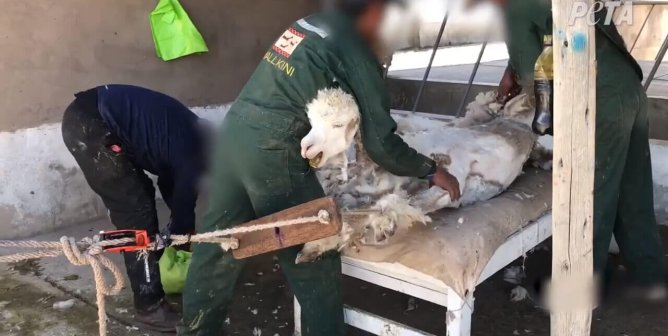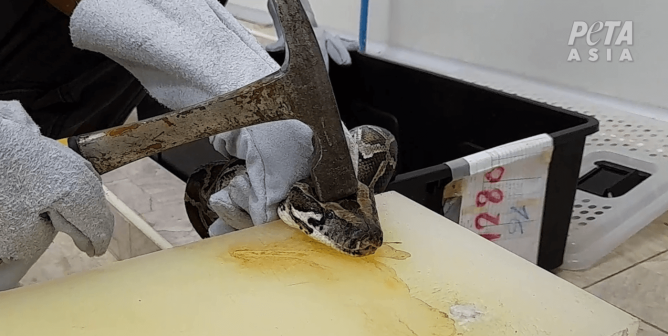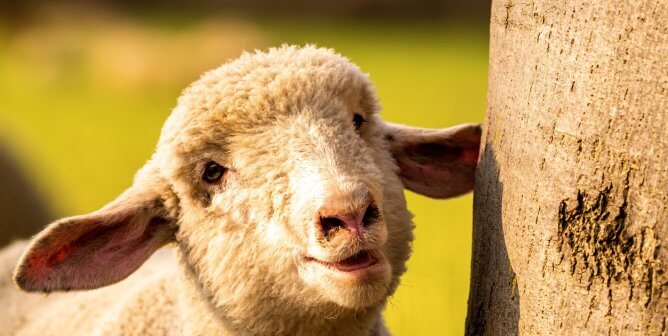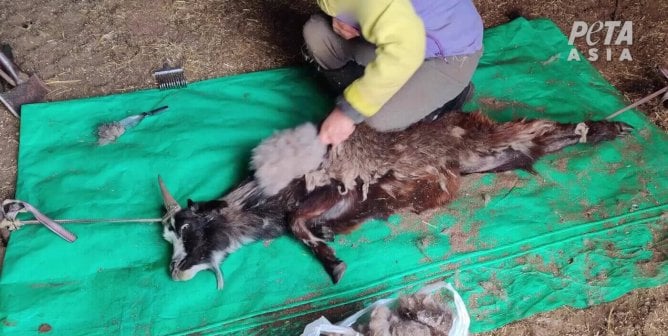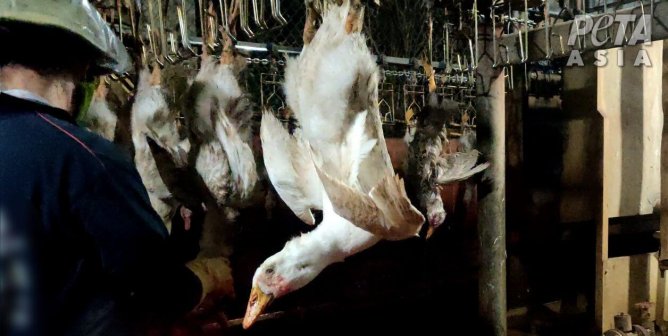Photo Gallery: Animals Used for Clothing
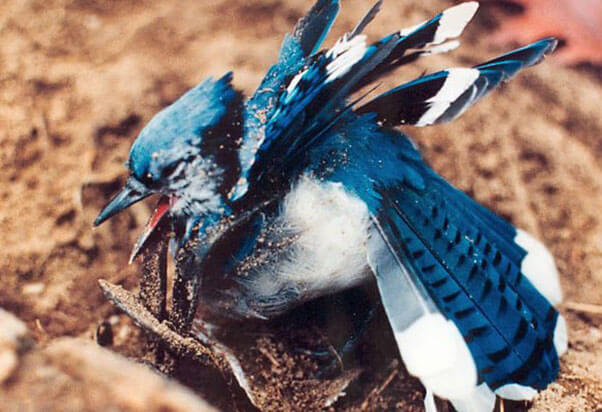
Blue Jay in Leghold Trap – Countless dogs, cats, birds, and other nontarget animals—including endangered species—are crippled or killed in steel-jaw traps every year.
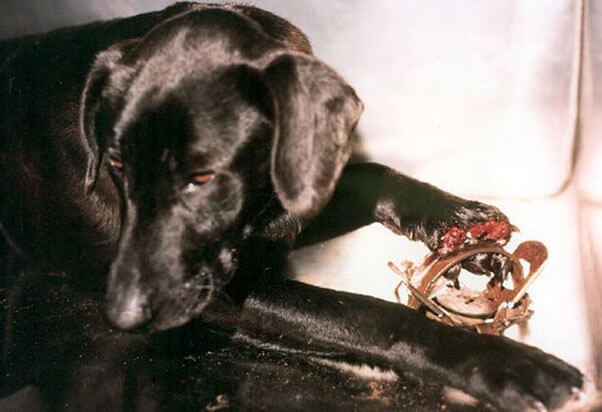
Dog With Paw Mangled in Trap – It is all too common for cats and dogs to wander into traps. Trappers call such animals “trash kills” because they have no economic value.
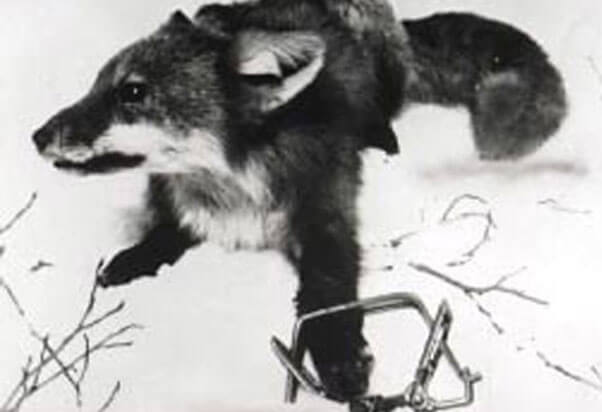
Fox in a Leghold Trap – Animals caught in steel-jaw traps endure excruciating pain; those who don’t die from blood loss or infection are usually beaten or suffocated to death when the trapper arrives hours or even days later.
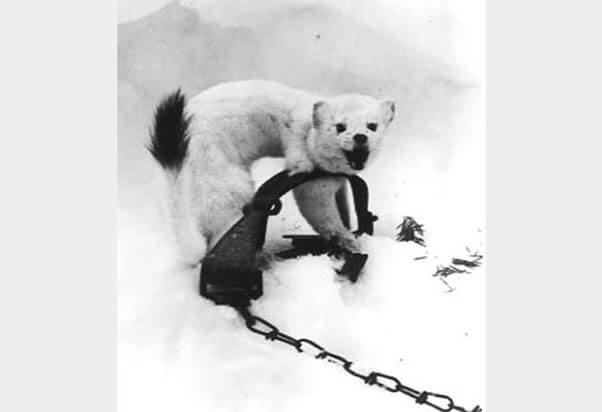
Mink in a Leghold Trap – Some animals, especially mothers desperate to get back to their young, fight so desperately to free themselves that they will even attempt to chew or twist off their trapped limbs.
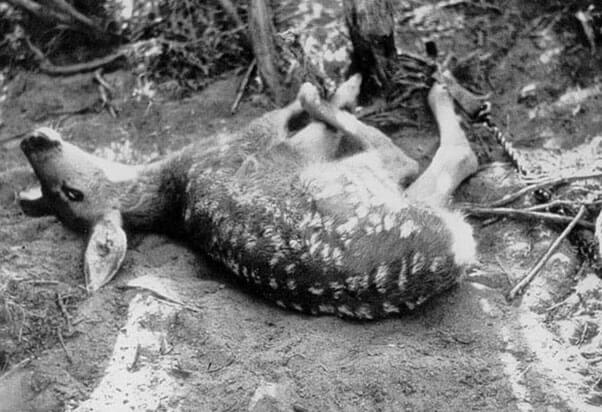
Deer Stuck in Leghold Trap – U.S. state regulations on how often trappers must check their traps vary from every 24 hours to once a week. Some states have no regulations at all.
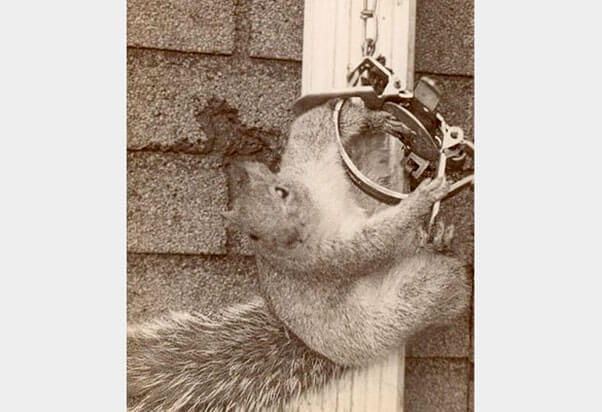
Squirrel in Leghold Trap – Animals caught in steel-jaw traps that were set in a tree or on a pole are left to hang by their trapped limb until the trapper comes to kill them.
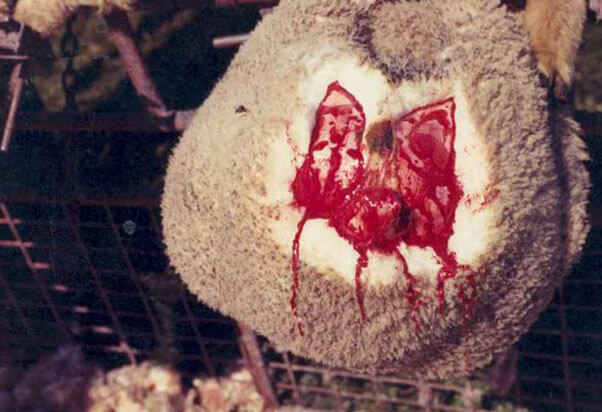
Wool
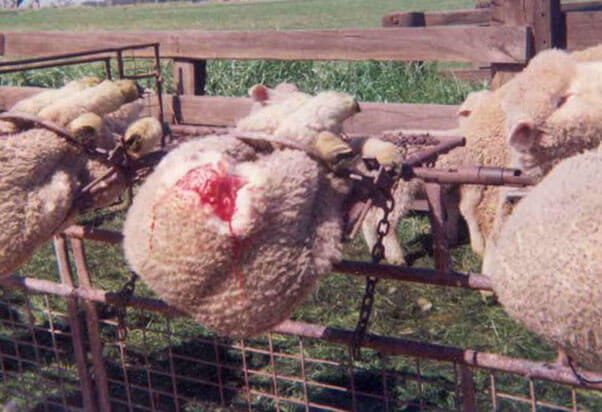
Wool
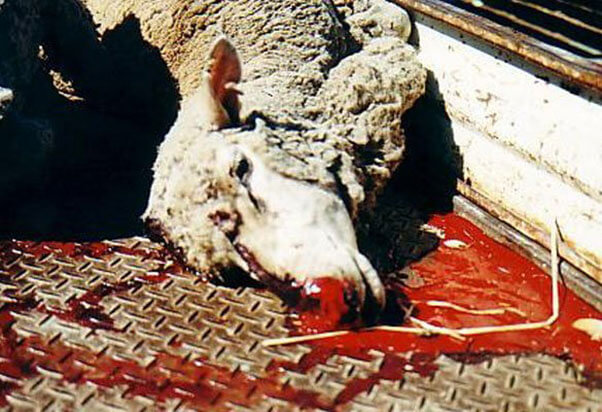
Wool
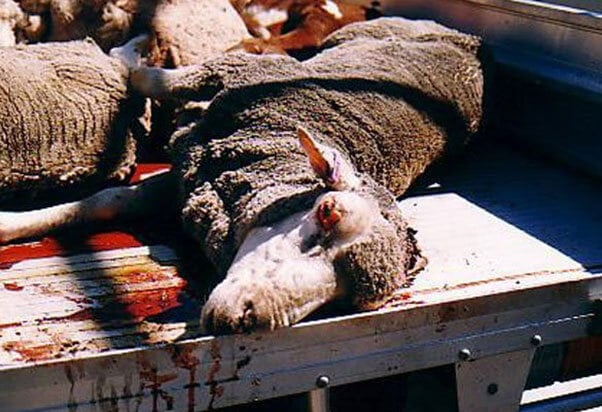
Wool
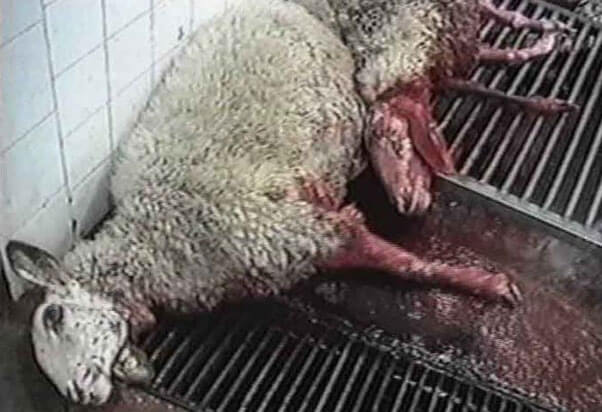
Wool
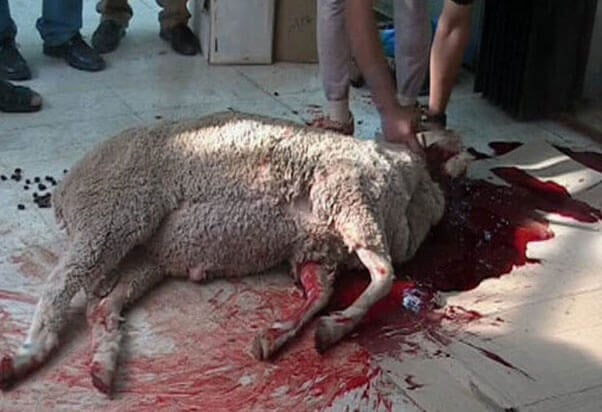
Wool
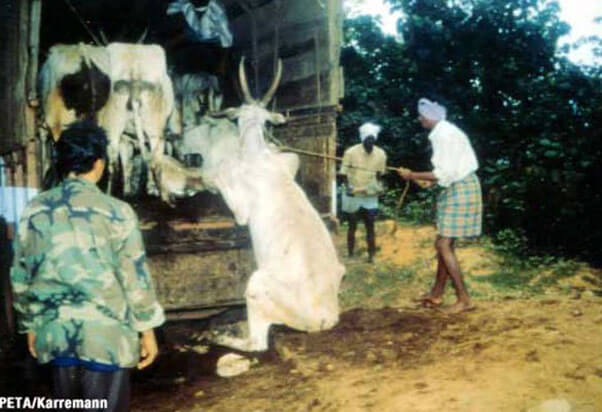
Cow being forced onto a transport truck. In India—where much of the world’s leather originates—animals are regularly crammed into trucks in such high numbers that they frequently experience broken bones or suffocate.
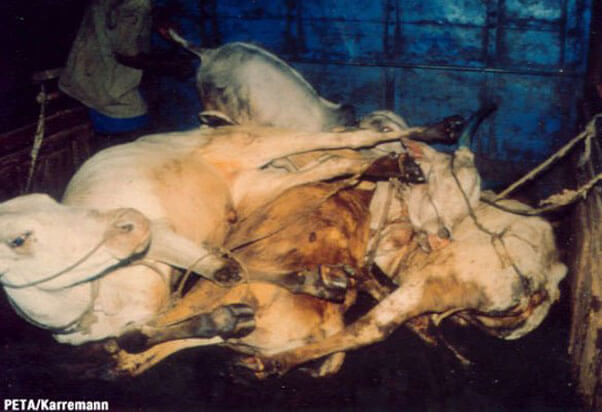
Injured cattle in a transport truck. Animals who survive the grueling trip to the slaughterhouse—many don’t—have their throats cut in full view of other animals and are often dismembered and skinned while still alive and conscious.
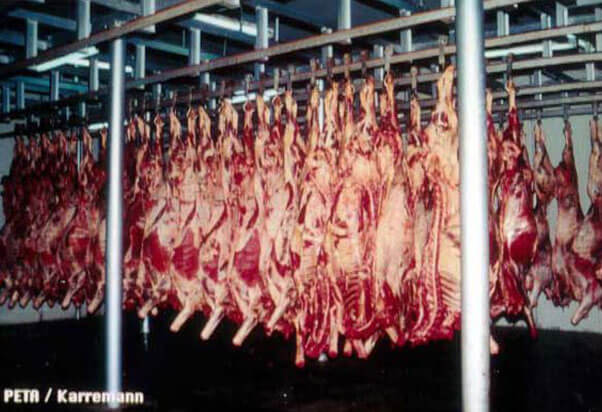
At the Slaughterhouse – Skins are the most economically important coproduct of the multibillion-dollar meat industry.
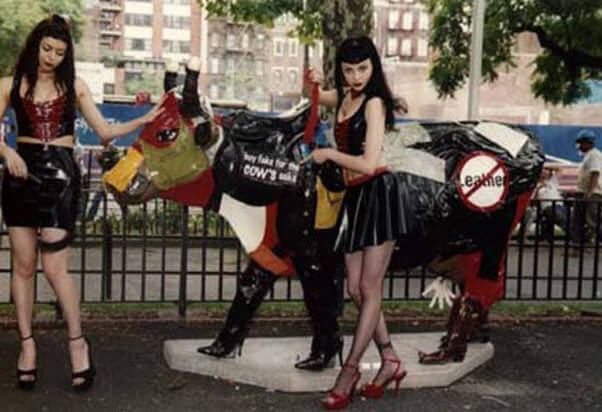
Protest – Dressed in sexy sin-thetic outfits, these PETA members are whipping up support for animal-friendly fake skins.
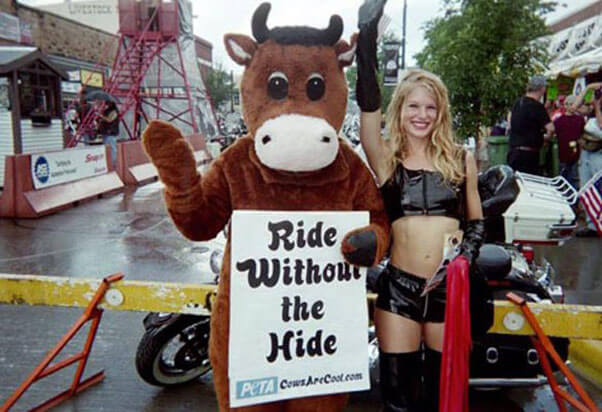
Protest – Thanks to the wide selection of nonleather motorcycle gear available, today’s rebels with a cause won’t have any trouble keeping cows off their hogs.
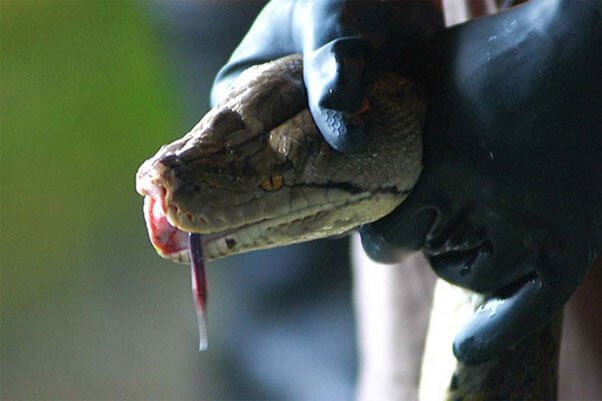
Snake – Every year, millions of reptiles are slaughtered so that handbags, belts, and shoes can be made from their skins.
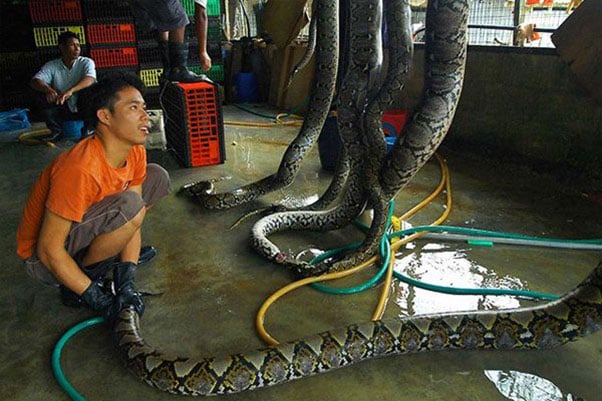
Snakes – In order to loosen snakes’ skin before slaughter, workers sometimes force pipes into the snakes’ mouths and pump the animals full of water while they’re still alive.
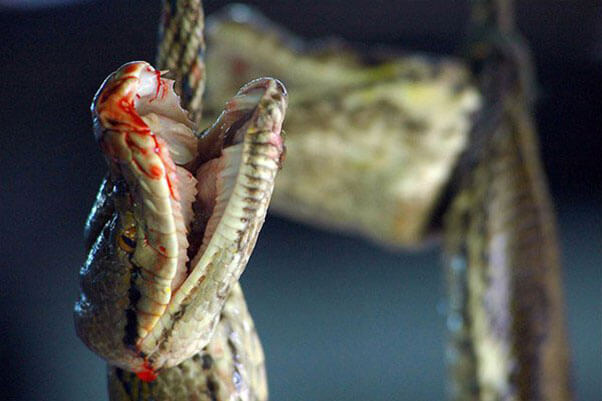
Snake – Dr. Clifford Warwick, a specialist in reptile biology and welfare, says, “Snakes are never killed in a good way.”
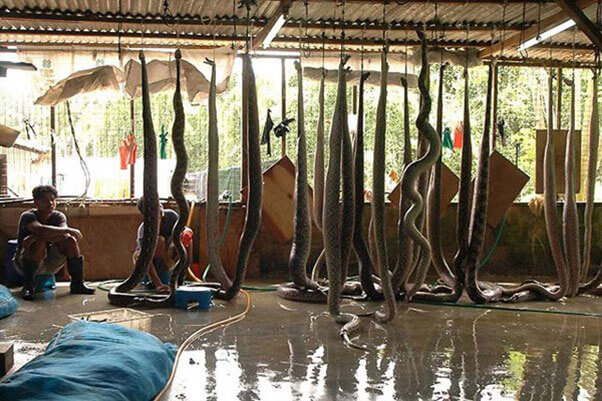
Snakes hanging – More than one-fifth of the world’s reptiles are at risk for extinction—and the exotic-skins trade is not helping them. Most snakes are caught in the wild because it takes a long time for farmed snakes to grow large enough for their skin to be usable.
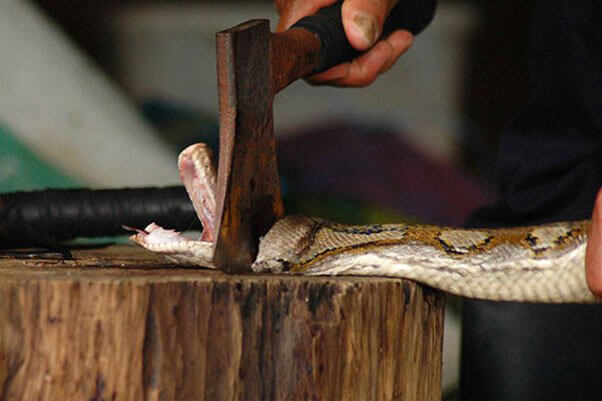
Snake decapitation – Snakes have a slow metabolism, which means that they may remain alive and conscious for hours after they have been decapitated.
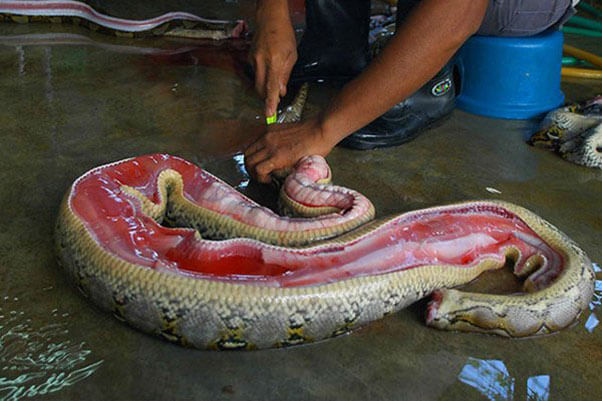
Snake being skinned – Humane treatment is not a priority for those who poach and slaughter animals for their skin.
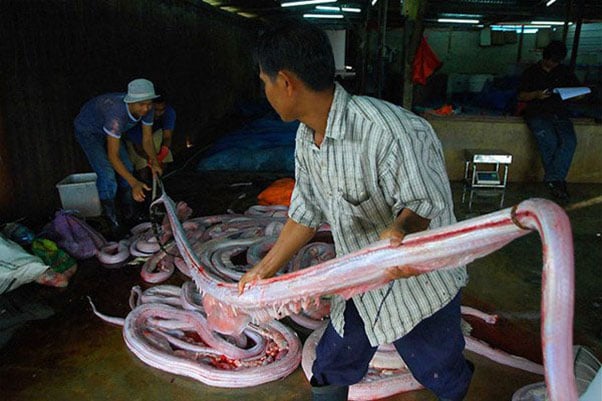
Snakes being skinned alive – Snakes and lizards are often skinned alive because of the belief that live flaying makes exotic leather more supple.
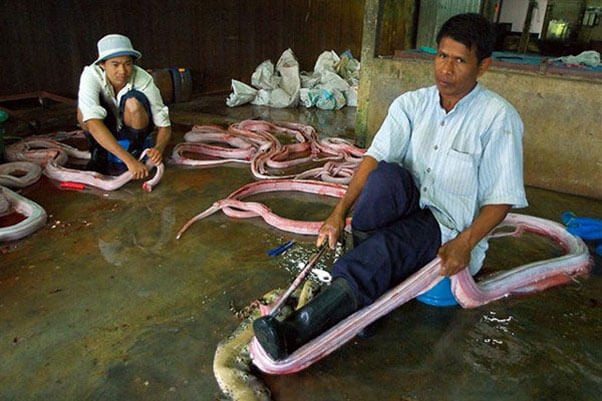
Snakes being skinned – In Southeast Asia, some species of large snakes are getting rarer and rarer—their populations simply cannot cope with the demand of fashion houses.
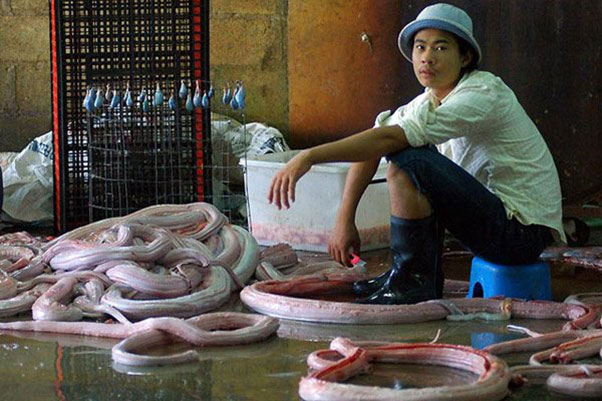
Reptiles being skinned – Once snakes have been skinned, they are tossed onto a pile and left to die slowly from shock or dehydration—a process that can take several days.
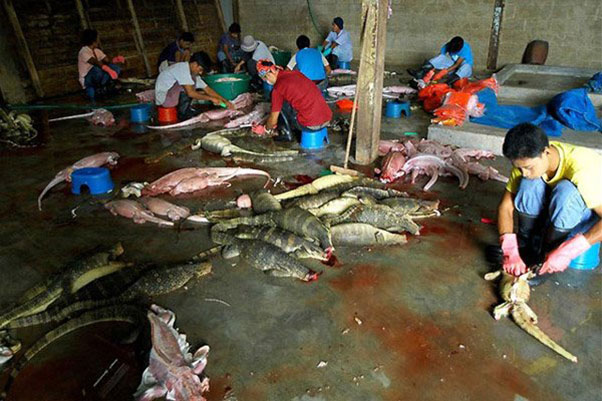
Beheaded reptiles – Like other reptiles, monitor lizards are often clubbed on the head, have their spines severed, and are skinned alive.
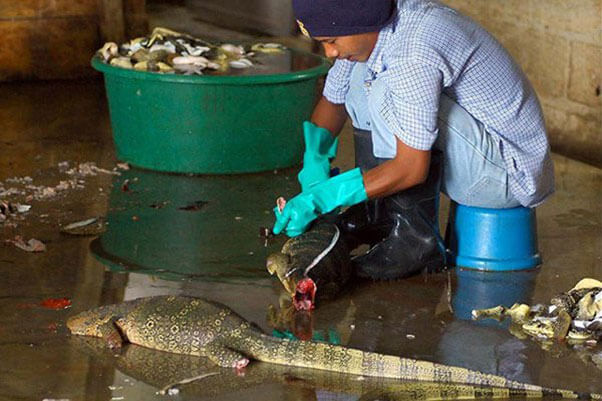
Reptiles being skinned – Monitor lizards on U.S. farms that supply designer brands live in half-submerged, concrete pens that resemble above-ground tombs.
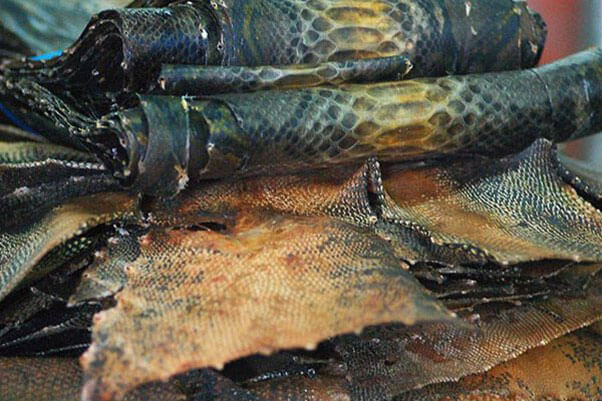
Reptiled skins – Wildlife biologists estimate that for every reptile who passes through the exotic-skins system legally, another reptile will be smuggled through—and that virtually all stores that sell exotic skins have some hand in this illicit trade, whether they are aware of it or not.
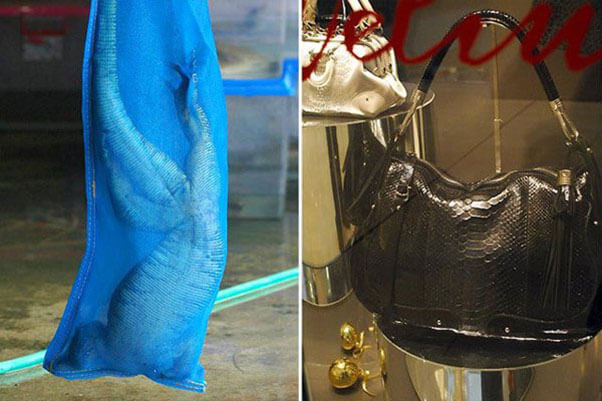
Alligator bags – Every bag, shoe, or jacket made from crocodile skin, alligator skin, or snakeskin comes with a high price—a price paid by the animals who are torn away from their jungle homes and cruelly killed.
